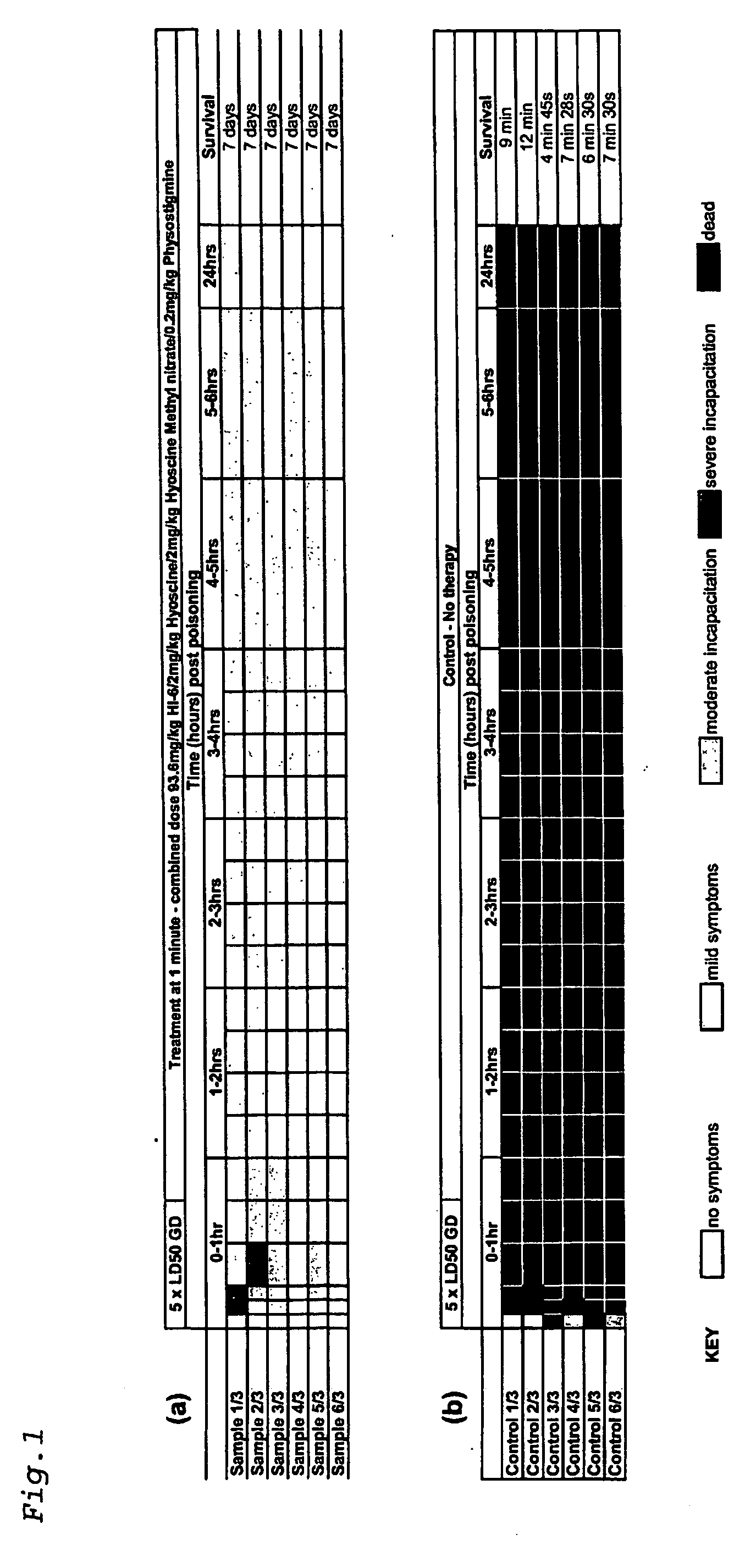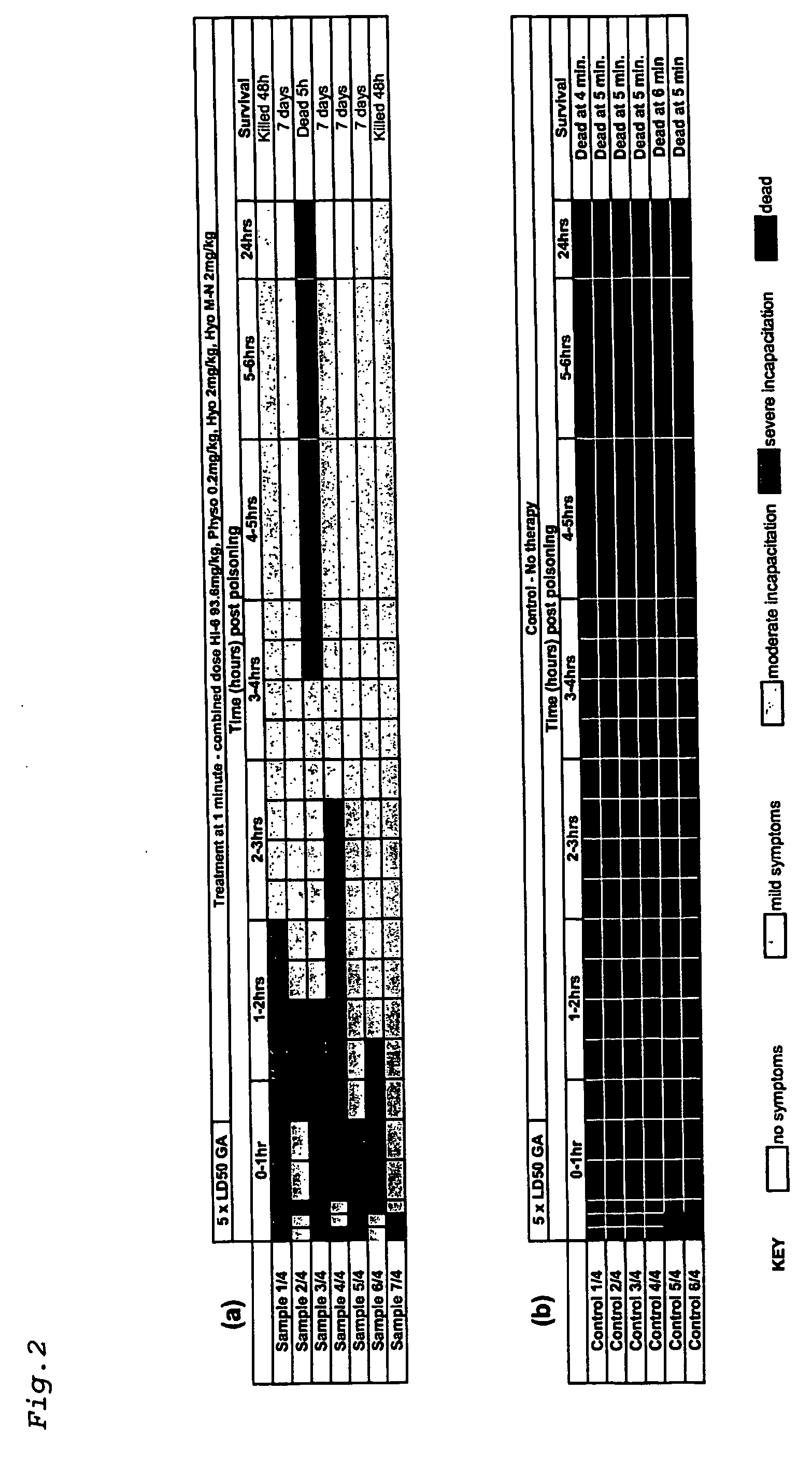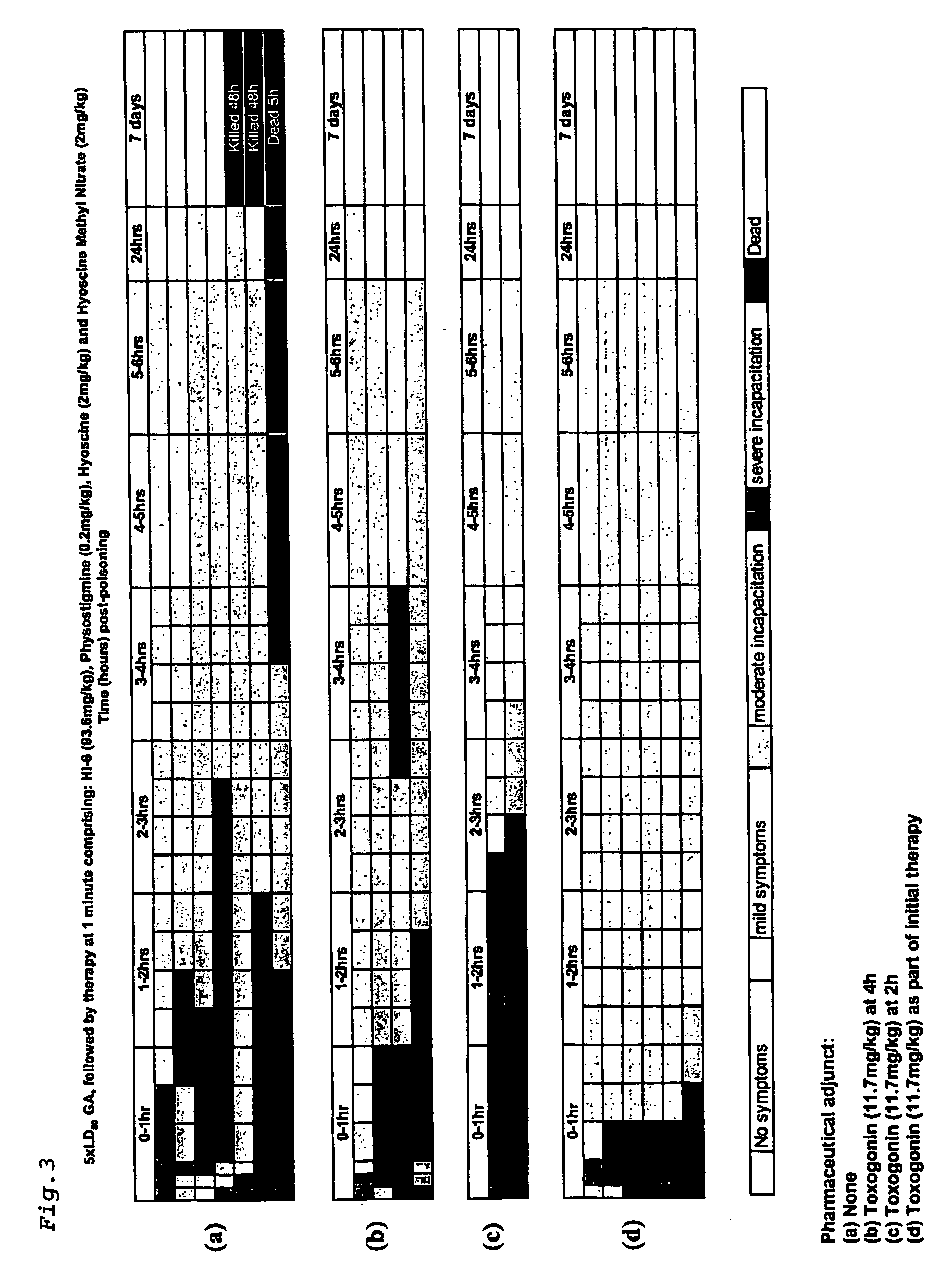Pharmaceutical compositions for the treatment of organophosphate poisoning
a technology of organophosphate and pharmaceutical compositions, which is applied in the direction of drug compositions, antinoxious agents, biocides, etc., can solve the problems of acetylcholine accumulation, acetylcholine toxicity to humans, and nerve agents that pose a risk to both military and civilian populations
- Summary
- Abstract
- Description
- Claims
- Application Information
AI Technical Summary
Benefits of technology
Problems solved by technology
Method used
Image
Examples
example 1
[0082] Using the above protocol, guinea pigs were challenged with 5×LD50 of GD and treated after 1 minute with a single dose comprising physostigrnine salicylate (0.2 mg / kg), hyoscine hydrobromide (2 mg / kg), hyoscine methyl nitrate (2 mg / kg) and HI-6 (dichloride salt) (93.6 mg / kg).
Results
[0083] All of the six animals that received treatment 1 minute post GD poisoning developed mild or moderate symptoms within five minutes (FIG. 1a). In two cases this deteriorated to severe incapacitation after 30 minutes. However, after 1 hour all six animals displayed only mild symptoms, with 5 of the 6 showing no symptoms after 24 hours. All six animals were observed healthy after 7 days.
[0084] Six control samples were used in this experiment (FIG. 1b). All exhibited severe incapacitation within 5 minutes post-poisoning, with no animals surviving beyond 12 minutes.
example 2
[0085] Using the above protocol, guinea pigs were challenged with 5×LD50 of GA and treated after 1 minute with a single dose comprising physostigmine salicylate (0.2 mg / kg), hyoscine hydrobromide (2 mg / kg), hyoscine methyl nitrate (2 mg / kg) and HI-6 (dichloride salt) (93.6 mg / kg).
Results
[0086] All seven samples treated at one minute post GA poisoning showed severe incapacitation within 1 hour (FIG. 2a). All seven improved to show only moderate symptoms within 3 hours. One animal died at 5 hours, but the other 6 continued to improve and were displaying only mild or moderate symptoms at 24 hours. Of the six animals remaining at 24 hours, 2 were culled after 48 hours as the humane endpoint was reached. The remaining four animals were observed to be healthy after 7 days.
[0087] Six control samples were used (FIG. 2b). Severe incapacitation or death was observed for all animals within 5 minutes, with no survivors remaining beyond 6 minutes.
example 3
[0088] Using the above protocol, four sets of guinea pigs were challenged with 5×LD50 of GA and treated after 1 minute with a single dose comprising physostigrnine salicylate (0.2 mg / kg), hyoscine hydrobromide (2 mg / kg), hyoscine methyl nitrate (2 mg / kg) and HI-6 (dichloride salt) (93.6 mg / kg). In addition two of the sets were treated with the pharmaceutical adjunct, toxogonin (1 1.7mg / kg) at 4 hours and 2 hours post exposure. The fourth set of guinea pigs was treated with 11.7 mg / kg at the same time as the initial therapy.
Results
[0089] All samples treated at one minute post GA poisoning showed severe incapacitation within 1 hour (FIGS. 3a-d). The set of samples which received no pharmaceutical adjunct recovered to show moderate symptoms within 3-6 hours (FIG. 3a). One animal died at 4 hours, and another 2 died or were killed after 24 hours. The remaining four animals were observed to be healthy after 7 days. Those animals which received toxogonin after 4 hours showed similar rec...
PUM
| Property | Measurement | Unit |
|---|---|---|
| survival time | aaaaa | aaaaa |
| survival time | aaaaa | aaaaa |
| humidity | aaaaa | aaaaa |
Abstract
Description
Claims
Application Information
 Login to View More
Login to View More - R&D
- Intellectual Property
- Life Sciences
- Materials
- Tech Scout
- Unparalleled Data Quality
- Higher Quality Content
- 60% Fewer Hallucinations
Browse by: Latest US Patents, China's latest patents, Technical Efficacy Thesaurus, Application Domain, Technology Topic, Popular Technical Reports.
© 2025 PatSnap. All rights reserved.Legal|Privacy policy|Modern Slavery Act Transparency Statement|Sitemap|About US| Contact US: help@patsnap.com



